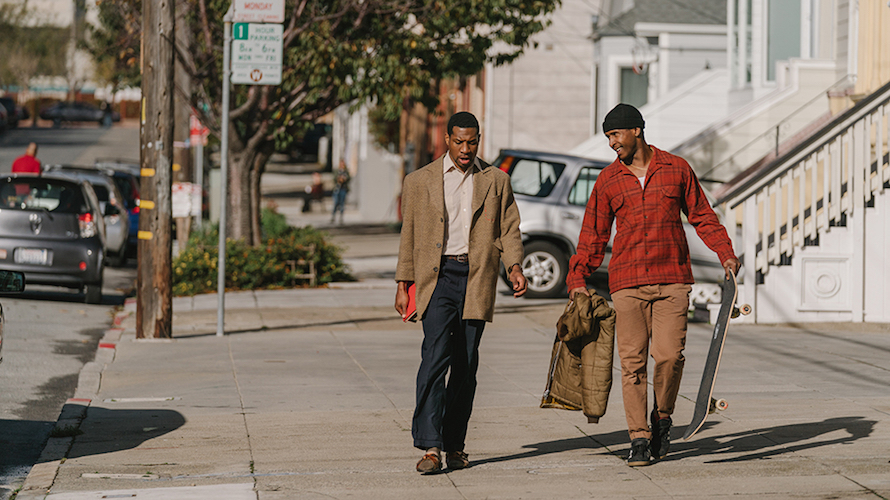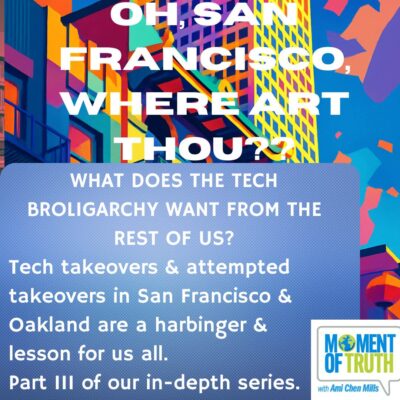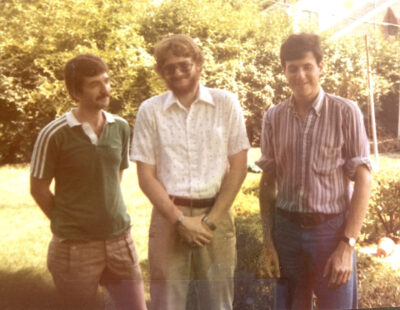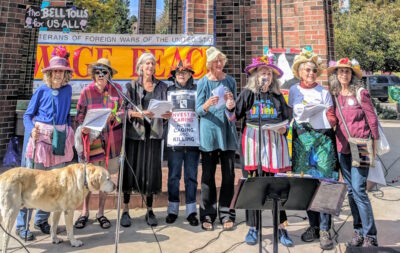
The Last Black Man in San Francisco won the Special Jury Award at this year’s Sundance Film Festival. It’s the directorial debut of Joe Talbot who won the Best Director prize. Talbot co-wrote the script with his longtime friend Jimmie Fails, who plays the lead character, also named Jimmie Fails due to its semiautobiographical origins. It’s an ode to the city they grew up in while telling the story of a young black man who longs to reclaim his ancestral home.
The character of Jimmie is a 3rd generation San Franciscan. His grandfather, nicknamed by local residents as “The First Black Man in San Francisco,” was part of the initial wave of African-Americans that supplanted the local Japanese population interned after Pearl Harbor. Not wanting to take a previously occupied home, family legend has it that Jimmie’s grandfather built one of his own in the same Victorian style of those constructed a hundred years earlier. Jimmie, along with his other relatives, grew up in that house until his father lost it, “smoked it up” as his aunt puts it, alluding to drug addiction as the culprit.
The rising cost of real estate fueled by an influx of dot-commers and wealthy baby boomers threaten to turn Jimmie into a symbolic, if not literal, last black man in San Francisco. But he’s so emotionally attached to his childhood home that he makes biweekly forays to the property in order to perform unsolicited maintenance. Accompanying him is his best friend Montgomery, somewhat confusingly portrayed by Jonathan Majors as a possibly gay, maybe autistic, wannabe playwright.
The two of them hail from a neighborhood near Hunters Point Shipyard not far from where white people wearing HAZMAT suits nonchalantly clean up radioactive contamination among the unprotected black residents. They live together with Montgomery’s blind grandfather, played by the always-fun-to-see Danny Glover, within a domicile where everyone is literally squeezed for space.
Not without irony, the house that Jimmie’s grandfather built is white, as are its current residents who are forced to vacate during an estate battle. This gives Jimmie and Montgomery an opportunity to first break in, then actually move in, thereby breathing new life into the old house which seems to acknowledge their presence with contented groans. While they’re squatting they desperately try to figure out a way to obtain ownership.
The overwritten script reflects the baroque styling of the house. The central thesis of gentrification is buttressed by ancillary themes such as wealth disparity, urban violence and the fracturing of family. But sidebar themes of masculinity, self-delusion and art as a means of expression compete with and dilute the main thrust of the film. And somewhat jarringly, a perfectly fine allegory of white America forcing blacks to the periphery of a country that they helped build gets replaced in the final moments with a less compelling whatever-gets-you-through-the-night bromide.
Nonetheless, the sheer craft of the film is well worth seeing on the big screen. Gorgeous cinematography, a lush musical score and atmospheric sound design transcend the script’s forced drama to create an audiovisual tone poem. A few storytelling problems notwithstanding, The Last Black Man in San Francisco is an auspicious first feature, and Talbot and Fails are young artists who posses the talent to convey their ambivalent feelings towards, and the inherent poetry of, “The City by the Bay.”
For KSQD’s Film Gang, this is Paul Kanieski.












